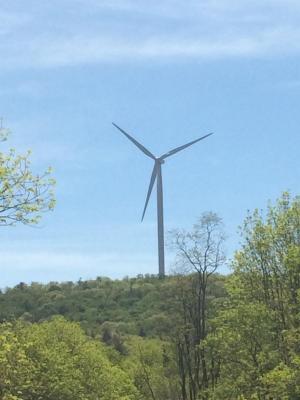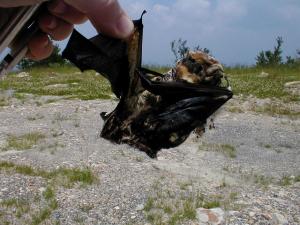News Release from windfair.net
Wind Industry Profile of
US: Scientists want to understand the origins of bats killed by wind turbines
Wind energy is a growing alternative to reduce greenhouse gas emissions from the combustion of fossil fuels. However, one impact of large-scale wind energy development has been widespread mortality of bats. A new study from the University of Maryland Center for Environmental Science tracks down the origin of bats killed by wind turbines in the Appalachian region in hopes of better understanding the risks to affected populations.
“We knew which species were being killed, but we didn’t know how they were moving across the landscape, how many were out there, or what their genetic diversity was,” said the study’s co-author and Associate Professor David Nelson of the University of Maryland Center for Environmental Science’s Appalachian Laboratory. “Our research is helping conservation managers to understand, ‘Are these species that we need to be concerned about?’”
 Wind-energy sites along the forested ridgelines of the Appalachian Mountains have some of the highest bat mortality rates in the world. The hoary bat (Lasiurus cinereus) and eastern red bat (Lasiurus borealis) comprise the majority of the turbine-associated deaths in North America.
Wind-energy sites along the forested ridgelines of the Appalachian Mountains have some of the highest bat mortality rates in the world. The hoary bat (Lasiurus cinereus) and eastern red bat (Lasiurus borealis) comprise the majority of the turbine-associated deaths in North America.
Little is known about the migration pathways of bats in North America or how wind-energy development may affect them. The researchers combined using stable isotope and genetic analysis for the first time to assess the impacts of wind-energy development on the bats impacted in the Appalachian region.
“Understanding the potential impacts of turbine-associated bat deaths is often complicated by a lack of data,” said lead author Cortney Pylant. “Studies such as this can help to identify species and populations at particular risk.”
The researchers determined the summering grounds of the bats killed by the wind turbines using stable hydrogen isotopes, a type of chemical fingerprint that reveals where animals have been despite having traveled long distances. Different forms of hydrogen exist in water depending on where it falls. For example, rain from higher elevations or close to the coast has a different signature than rain from lower elevations or further inland. These differences work their way up the food chain and are recorded in the hair of each bat. Researchers can then analyze the hair and use its hydrogen isotope signature to determine where the bats spent their summer, a time when they molt and grow in new fur.
The researchers also extracted DNA from the bats’ wing tissue to examine their genes to help understand how capable the species may be to adapting to an increase of deaths to their population, including how many individuals of a species are in the breeding population to enable them to maintain their numbers.

These results suggest that intensive wind-energy development may affect the bat species dissimilarly, with the large and more regional population of red bats potentially better able to absorb wind-turbine related deaths than the substantially smaller population of local hoary bats.
As the primary predators of night-flying insects, bats limit the spread of insect-borne plant and animal pathogens and prevent billions of dollars of crop damage each year. The results of the University of Maryland Center for Environmental Science study provide much-needed baseline isotopic and genetic data for understanding the potential impact of wind-energy development on bat populations, which is a high priority for conservation and ecosystem services.
“Geographic origins and population genetics of bats killed at wind-energy facilities,” by Cortney Pylant, David Nelson, Matt Fitzpatrick, Ed Gates, and Stephen Keller of the University of Maryland Center for Environmental Science’s Appalachian Laboratory, was published in Ecological Applications.
UNIVERSITY OF MARYLAND CENTER FOR ENVIRONMENTAL SCIENCE
For 90 years, the University of Maryland Center for Environmental Science has led the way toward better management of Maryland’s natural resources and the protection and restoration of the Chesapeake Bay. From a network laboratories located across the state, UMCES scientists provide sound advice to help state and national leaders manage the environment, and prepare future scientists to meet the global challenges of the 21st century. www.umces.edu
- Source:
- University of Maryland Center for Environmental Science
- Link:
- www.umces.edu/...
